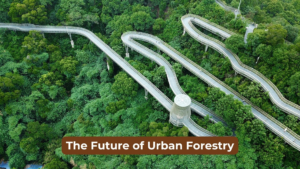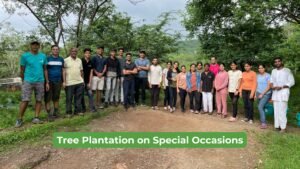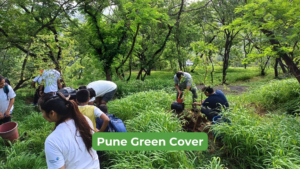The ancient art of Bonsai symbolizing harmony, balance, and peace dates back to well over a thousand years. The word ‘Bon-sai’, which is Japanese in origin literally means “planted in a container”. It traces its roots to an ancient Chinese horticultural practice. Bonsai further developed under Zen Buddhism. It has been said that “According to Japanese tradition, the Bonsai represents the three virtues or shin-zen-bi, which translates into truth, goodness, and beauty. “There also exists the belief that Bonsai is symbolic of the minimalist approach of Zen Buddhism and teaches us to remove clutter from our lives.
Then again, Bonsai is thought by some to reflect the resilience of a tree, as it weathers the elements, thereby allowing the artist to create a miniaturized and realistic reproduction of something worth admiring in nature. The value of a Bonsai can be gauged from the fact that it is considered to be a precious heirloom, handed down from one generation to the next. Also, worth mentioning is that Bonsai trees are considered tokens of respect which bestow good fortune on the receiver.
Nature provides direct inspiration for Bonsai namely in the form of those trees that grow in rocky landscapes and consequently remain gnarled and stunted throughout their lifespan. A weathered appearance in the upper roots and an aged appearance of the trunk and branches are considered to be aesthetic qualities, signifying the volatility and vulnerability of life. Having established the fact that the end purpose of Bonsai is to create a mini albeit true replica of Nature in the form of a tree, it would be remiss not to clarify that Bonsai are not genetically dwarfed trees.
On the contrary, any plant species bestowed with a woody stem/trunk and possessing true branches and comparatively smaller leaves is ideal for Bonsai. Keeping the Indian climatic conditions in mind, the suitable candidates could include Banyan, Bottlebrush, Bougainvillea and all varieties of Ficus, to name a few.
Bonsai Techniques
The average height of a Bonsai is four feet. Limiting and redirecting the growth of a Bonsai is carried out using methods like pruning and wiring branches, pinching buds, and restricting fertilizers. As with everything, else Bonsai also needs to begin at the beginning and that means getting a tree to work on. The selection of the tree should be made keeping in mind its placement. If you prefer to have your Bonsai indoors, your options will be limited to either tropical or subtropical trees. However, if it’s the outdoors that you prefer, your choice would have to include non-tropical trees, provided they are protected against intense sunlight and freezing cold. The three main techniques involved in crafting a Bonsai are- cultivation, styling, and care.
1. Cultivation
There are various means of cultivating a Bonsai:
a) Buying Bonsai nursery stock / young garden plants also called pre-bonsai is a good way to rapidly propagate a tree.
b) Yamadori (collecting trees) – The reference is to trees found in nature that have remained stunted owing to natural circumstances such as an inadequate supply of nutrients.
c) Sashiki (Growing Bonsai from cuttings)
This is an inexpensive method of propagation since it saves time by approximately a year, as compared to growing a Bonsai from seed.
d) Misho (Growing from seed)
It is the only way to grow a Bonsai from scratch. Needless to say, it can be the most rewarding and fulfilling experience as one can exercise full control from the earliest stage.
2. Shaping and Styling
This technique presents the creative as well as the difficult part of growing Bonsai. The shape and style of the Bonsai are achieved by means of Pruning and Wiring. Pruning is the most important technique owing to the fact that it helps to shape and miniaturize trees. Spring and summer are the best seasons for pruning. Wiring involves wrapping anodized aluminium or annealed copper around branches to bend and shape them.
3. Care and Maintenance
There are three main steps involved in care and maintenance:
a) Watering – This depends on the species, soil, pot size, and climate. Over watering could lead to root rot. On the other hand, Bonsai tend to dry up easily because they are planted in small pots. Hence, it is essential to choose the right soil mix, report, and check on the tree, before watering.
b) Fertilization – Regular administration of fertilizer in a tree’s growing season is imperative to keep it healthy.
c) Decide where you want to place the tree before buying or cultivating Bonsai.
Bonsai is an attempt to mirror what is seen in nature. That being so, there are certain rules to be borne in mind while creating a Bonsai. The height of the trunk should be no more than six times the caliper of the trunk. The trunk should lean towards the viewer and taper as it ascends. The roots should radiate and the trunk shouldn’t move back.
As for the branches, they should not cross the trunk. The first branch should be at one third the height of the tree. Eye poking branches should be avoided and branches should diminish in size as they ascend.
Designs
Bonsai’s designs are guided by aesthetics. Small flowered or small fruited tree varieties are favored as are small leaves on deciduous trees and short needles on conifers. Also, of aesthetic importance is open space between branches and between masses of foliage.
Bonsai can be created in a variety of styles as per one’s expertise and inclination. Here are some of the ways to fashion a Bonsai:
1. Formal Upright (Chokkan)
This is the most natural style and also the most common form of Bonsai. The trunk is perfectly straight and the branches incline to the right to suggest age. The bottom third of the branches are removed and the remainder is drawn downwards.
2. Informal Upright (Moyogi)
Common in both natural as well as in Bonsai, the Informal Upright style is well within the reach of the beginner and intermediate Bonsai lover. This look can be achieved primarily with pruning and clipping. The sinuous lines of the main trunk and the radiating branches of the bends of the trunk favor novices as they are apt for hiding mistakes. A slight curvature in the trunk is suggestive of the harsh elements of nature. This effect is achieved by the use of cords or wires. Deciduous and coniferous trees are most suited to this style.
3. Broom (Hokidachi)
A breath taking sight particularly in winters, this style calls for a straight trunk that divides and sub-divides into several branches. A thick and finely branched crown completes the picture. This is one of the easiest styles to achieve. The Broom look can be achieved by cutting branches and clipping leaves. Even the requirement of tools is minimal. A pair of shears and a concave cutter are all that is needed. Additionally, this style saves you the hassle of a lot of wiring and bending of branches and trunks. The Hokidachi style looks best on elms, beaches, and maples.
4. Slanting (Shakan)
The slope of the trunk is pronounced and the branches are either horizontal or droop downwards.
5. Windswept (Fukinagashi)
This style is rare in Nature. Such trees are usually found on cliffs or mountains. To achieve the windblown effect, trunk, branches, and twigs are trained in a single direction.
6. Clasped-to Stone
This much loved but difficult style requires that the tree is set on a gravel or water dish. The size and shape of the rock should complement the tree.
7. Literati (Bunjingi)
The go to style for the minimalist Bonsai grower, the Literati style is perfect for those who cannot afford expensive plants, tools, or wires. In nature, this style can be seen in areas densely populated with trees, such that the tree can only survive by growing taller than the others. The trunk grows crookedly upwards and is without branching because the sun only hits the top. Evergreens are best suited to this style.
8. Cascade (Kengai)
The tree grows upright for a small stretch and then bends downwards, similar to a tree living in nature on a steep cliff that bends downwards due to snow or falling rocks. The crown of the tree grows above the rim of the pot.
9. Semi Cascade (Hang Kengai)
Most likely to be found in nature on cliffs and banks of rivers and lakes, this style differs from Cascade in that, the trunk will never grow below the bottom of the pot.
10. Double trunk style (Sokan)
Both trunks grow out of one root system or the smaller trunk grows out of the larger trunk.
11. Multi trunk Bonsai (Kabudachi)
Here, three or more trunks grow out of a single root system.
12. Forest Style
This style is comprised of several trees with several trunks. The most developed trees are planted in the middle of a large and shallow pot. The smaller trees are planted on the sides to contribute to one single crown. The trees are planted in a staggered fashion in order to give a realistic touch to the forest look.
Bonsai trees can be classified as per size, as miniature, medium, and large. Each of these categories also has sub categories.
1. Miniature Bonsai Trees
a) Kenshitsubo – It is the smallest variety and rarely exceeds one to three inches in height. It is very aptly called the “poppy seed” size and can be lifted with two fingers.
b) Shito – Also known as thimble bonsai because it is found in pots no larger than a thimble, Shito is the smallest common size. Its growth is restricted to anything between two to four inches in height. Hence it is also known as fingertip size.
c) Shohin – The height of Shohin or Palm bonsai (so called because it can easily be accommodated in the palm) ranges from two inches to six inches.
d) Mame – This is the smallest of the bonsai trees known as one handed trees since it takes one hand to move them. Height varies between four to eight inches.
e) Komono- Known as the generic small bonsai tree Komono grows from six inches to ten inches.
2. Medium Bonsai Trees
a) Katade-Mochi – These are neither too large to handle nor too small to handle. They grow anywhere between ten to eight inches in height.
b) Chumono, Chiu – Growing between sixteen to thirty eight inches in height these are two handed bonsai trees.
c) Medium and Big – Medium refers to trees that are twelve to twenty four inches tall and Big refers to trees that range from twenty four to thirty six inches in height.
3. Large Bonsai Trees
a) Omono – Height varies from thirty to forty eight inches.
b) Dai – They are practically the same size range and style as Omono. The subtle differences are known only to experienced bonsai masters.
c) Hachi-Uye – These are among the largest bonsai trees, growing from anything between forty to sixty inches in height. They are very aptly called six hand trees as three people are required to move such trees in their pots.
d) Imperial – As is evident from the name, Imperial is the largest and most majestic of all bonsai. Found mostly in Japan’s imperial gardens, their height varies from sixty to eighty inches. Owing to the number of people needed to move them, they are also called eight handed.
Coming to the suitability of plants for Bonsai, there is quite a variety that makes the cut. The most popular ones, to name a few are:
- Boxwood – Normally used to create hedges, it works perfectly for novices since it is easy to care for and container friendly.
- Pomegranate – It’s gorgeous crimson flowers, luscious fruit and lovely bark make it ideal for Bonsai.
- Bougainvillea – The colourful flowers and woody stem of a bougainvillea make a bonsai made with this plant, a sight for sore eyes.
- Chinese Elm – This tree screams versatility. Prune and style anyway you want. You will always end up with a “thing of beauty”.
- Dwarf Schefflera – An easy to grow, indoor bonsai with a beautiful trunk.
- Banyan – Never fails to leave people gasping in wonder, when they spot the mighty banyan growing in a container.
- Olive – With its free flowing branches and nice trunk structure the Olive is sure to add life to your bonsai collection.
- Adenium – If you are looking for a fast growing bonsai, then Adeniums are the answer. Possessors of a thick trunk with beautiful flowers, Adeniums are a popular choice.
- Pine – It is perfect owing to its rough, jagged look.
- Juniper – With more than fifty varieties, Juniper offers ample scope to create a masterpiece.
The Bonsai tree reflects the mood, personality, and awareness level of the creator. The entire bonsai creation depends on the potting and arrangement with suitable stones and ornaments. An essential part of Bonsai art is the harmony between the tree and the container.
A classic Bonsai pot is ceramic or porcelain and is stoneware burned. This implies that it absorbs water which is crucial for the health of the tree. The two essential requirements for a Bonsai container are that it should have drainage holes and wiring holes to fix the tree to the pot. The pot’s design should match the tree’s degree of masculinity or femininity. As for the glaze, the rule is that the colour should appear somewhere on the tree. Unglazed brown, grey, and earth hues are usually safe colours. Grey and brown are most suited for conifers like Pine and Juniper.
Flowering or Deciduous trees are complemented by glazed ceramic pots in cream or brown or light blue hues. Unglazed pots in brown or grey and red clay complement evergreen bonsai trees. It is imperative to select a pot that will not steal the thunder, by overshadowing the beauty of the tree. Rather the pot should be such that it enhances the tree’s beauty.
Bonsai is a stress-busting, leisurely and rewarding hobby. It allows one to enjoy the natural beauty of plant life, in the comfort of one’s own environs. It is a unique and fascinating hobby that brings man closer to nature and allows one to experience the magnificence of the outdoors on a reduced scale.
Indian Bonsai practitioners have described their experience as being similar to meditation. Like Feng Shui, Bonsai helps one achieve balance and harmony in life. The fusion between the two can be instrumental in helping one understand the forces of nature and bringing Chi into one’s life. With time and practice, Bonsai like Feng Shui can help get rid of clutter, both physically and mentally.
Now that you are well-informed about Bonsai and its kinds, if you are interested in making the practice of Bonsai a crucial part of your life, then get in touch with us at Nelda. We, at Nelda can help you navigate through the intricacies of Bonsai creation. Contact us and embark on rich and rewarding experience!




